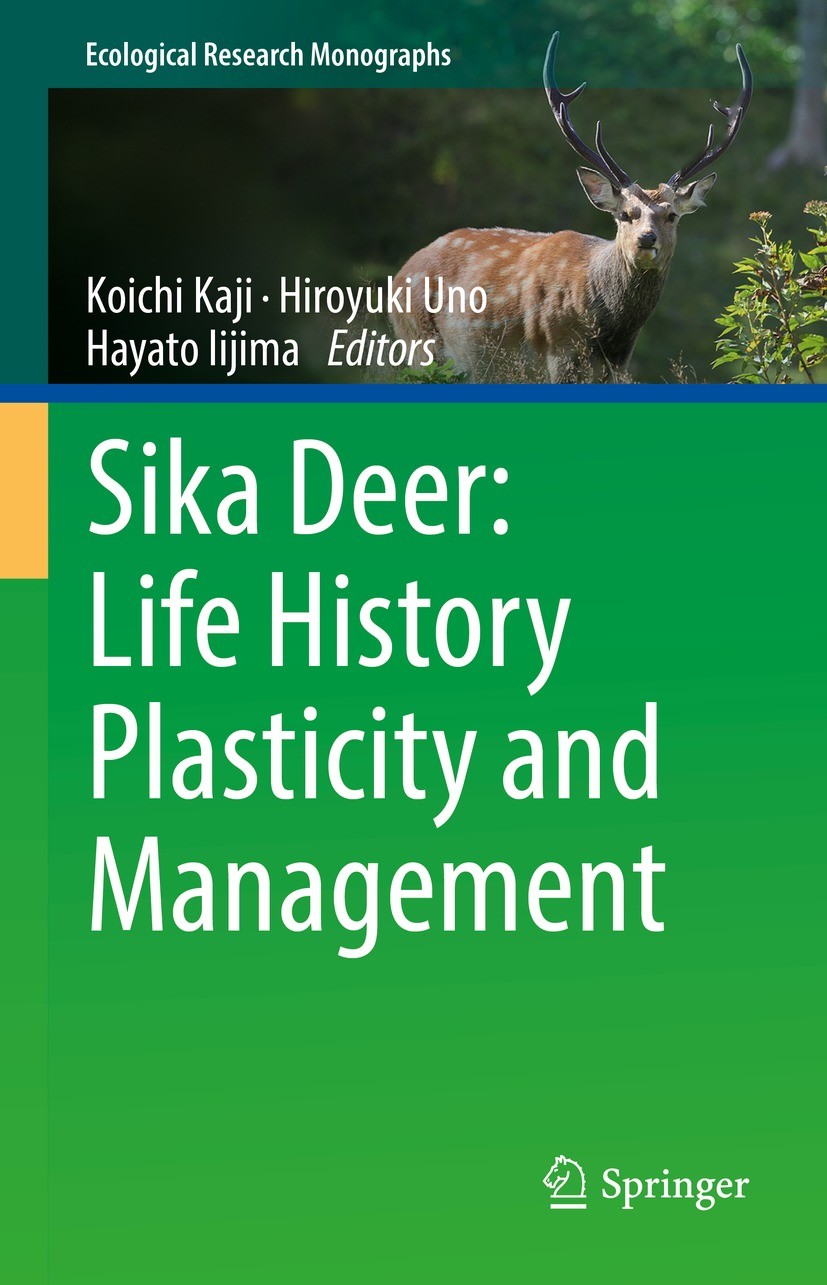| 書目名稱 | Sika Deer: Life History Plasticity and Management |
| 編輯 | Koichi Kaji,Hiroyuki Uno,Hayato Iijima |
| 視頻video | http://file.papertrans.cn/868/867250/867250.mp4 |
| 概述 | Describes the impacts caused by overabundant deer from the view of ecological function and resilience.Adopts an integrated approach including ecology, morphology, reproductive physiology, genetics and |
| 叢書名稱 | Ecological Research Monographs |
| 圖書封面 |  |
| 描述 | This book provides complete and?up-to-date?information?on?sika deer biology and?its?management,?focusing on?their?life history?with?an integrated approach of population dynamics, morphology, genetics, and evolution.??.The?expanding?distribution of sika and its?increase?in?population?in Japan and?other countries are?causing damage to agriculture and forestry, impacting?ecosystems?and?affecting?other species. We are facing conflicting deer issues regarding the conservation of resource values and pest control of sika deer.?.This contributed volume compiles new findings focusing on the ecological plasticity of the sika deer. It aims to clarify the ecological characteristics of the deer by integrating studies of different approaches and provides a perspective for their management.?.The book consists of six parts. Part I introduces the ecological and management background behind the history of sika deer. The following?four parts discuss movement ecology (Part II), impact on vegetation and bottom-up effect on sika deer (Part III), impact on ecosystem and its resilience (Part IV), and comparison of life-history characteristics between sika deer and other ungulate species (Part V). The last |
| 出版日期 | Book 2022 |
| 關鍵詞 | Sika Deer; Plasticity; R-k Strategy; Irruption; Geographic Variation; Vegetation-Herbivore Interaction; La |
| 版次 | 1 |
| doi | https://doi.org/10.1007/978-981-16-9554-4 |
| isbn_softcover | 978-981-16-9556-8 |
| isbn_ebook | 978-981-16-9554-4Series ISSN 2191-0707 Series E-ISSN 2191-0715 |
| issn_series | 2191-0707 |
| copyright | The Editor(s) (if applicable) and The Author(s), under exclusive license to Springer Nature Singapor |
 |Archiver|手機版|小黑屋|
派博傳思國際
( 京公網(wǎng)安備110108008328)
GMT+8, 2025-10-5 23:37
|Archiver|手機版|小黑屋|
派博傳思國際
( 京公網(wǎng)安備110108008328)
GMT+8, 2025-10-5 23:37


